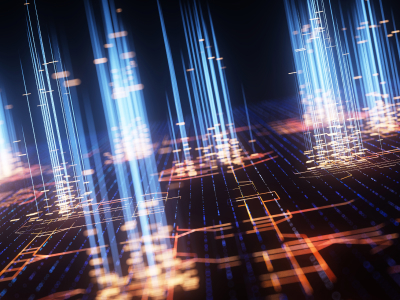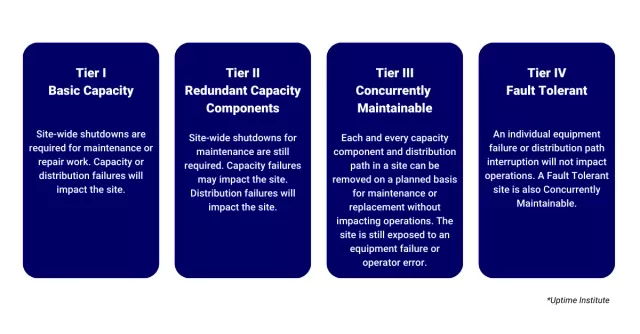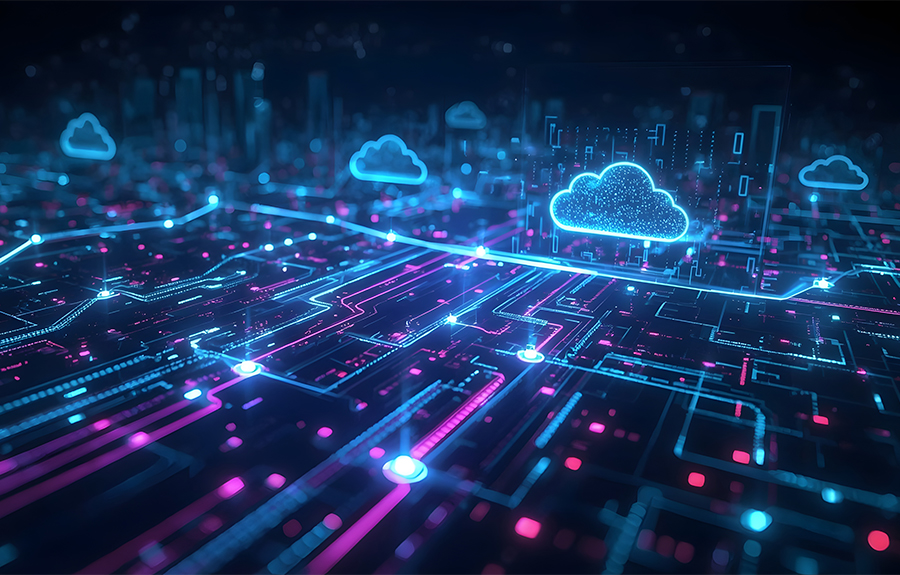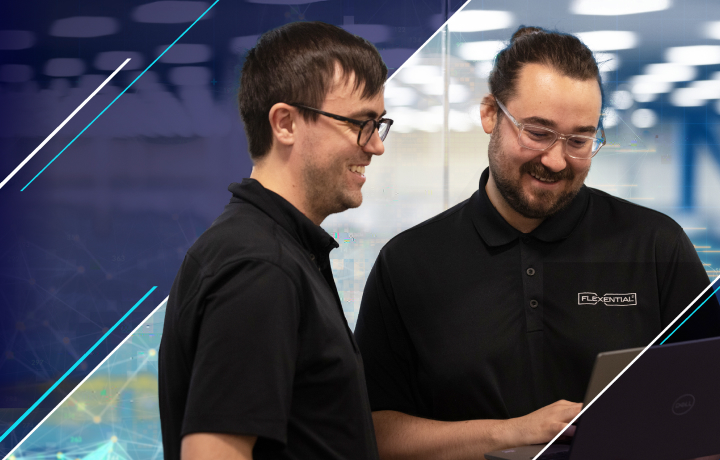What is a data center and why is it important for business?
Business runs on data. Data drives decision-making, efficiency, and, most importantly, customer experiences from small businesses to enterprises.

Where does all this data reside, how is it managed, and what makes it available when needed? That answer is data centers, and it is more complex than you might think. In this blog post, we explore what data centers are, the types of data centers you can choose from, the standards and features you should look for, and why they are essential for your business.
The definition of a data center
The most basic definition of what is a data center is “a large group of networked computer servers typically used by organizations for the remote storage, processing, or distribution of large amounts of data.”
While the primary function of a data center is to store, process, and manage (usually large) amounts of data required for businesses to operate, it requires physical infrastructure components such as servers, storage devices, and networking equipment to work together to ensure seamless — and secure — data processing and storage.
Data centers can be owned by businesses themselves or outsourced to third-party data center service providers. Providers offer managed, colocation, and cloud services, allowing companies to choose a variety of levels of control over their infrastructure and data use, depending on their needs.
Types of data centers
The days of tightly controlled, on-premises data center facilities and traditional IT infrastructure exclusive to just one company have evolved to welcome remote networks housing virtualized and hybrid IT infrastructures for the shared use of multiple customers. Let’s explore the different types of data centers and how they are used today.
Enterprise (on-premises) data centers
On-premises, or “on-prem,” are physical locations owned and operated by enterprise companies for their own internal computing data storage needs. These custom-built data centers are designed to meet the organization's requirements, with all IT infrastructure and data hosted on-site.
The advantage of on-premises data centers is control over information security and compliance with regulations, such as the European Union General Data Protection Regulation (GDPR) or the U.S. Health Insurance Portability and Accountability Act (HIPAA). While that control benefits specific industries, it comes with a burden — the company is responsible for all deployment, monitoring, and management.
Managed services data centers
As the name suggests, managed data centers are deployed, administered, and monitored by a third-party service provider. The company leases servers, storage, and networking hardware for multiple data centers while the data center provider oversees the administration, monitoring, and management. Data center features and functions are accessed using a managed service platform.
Managed data centers are great options for organizations that are limited in space, staff, or the expertise to deploy and manage their IT infrastructure on-premises and don’t want their business-critical data to be part of the shared resources of a public cloud data center.
Colocation data centers
As you would expect, there is a hybrid offering — what is referred to as a colocation data center facility. Businesses rent space within an off-premises physical facility that hosts the infrastructure, including power supplies, cooling, and data center security. At the same time, the organization provides (and manages) its components, including hardware and servers.
Traditionally, the customer had exclusive access to the hardware and, therefore, full responsibility for managing it; however, this can often be impractical, especially during power outages or emergencies. Therefore, most colocation and cloud providers also now offer management, monitoring, and more — value-added services that help improve business agility, performance, and flexibility.
Colocation works for pretty much any size of business, even large enterprises, as building a data center is costly, often with less than stellar results. Paired with a solid colocation strategy, customers benefit from services that fit their unique business needs, optimized for growth while delivering powerful connectivity and security, all while minimizing the total cost of ownership.
Cloud data centers
In layperson's terms, cloud data centers are off-premises variations of a data center — leased and hosted infrastructure managed by a third-party service provider, accessed via the Internet. To handle the demands of artificial intelligence (AI), smaller, edge data centers are located closer to cloud customers to run real-time, data-intensive workloads. However, the evolution of enterprise data centers to cloud IT infrastructure is a bit more complex.
The ultimate in flexibility and scalability, virtual cloud data centers have a great deal of appeal. Software-defined networking (SDN) manages traffic flow via software, while Infrastructure as a Service (IaaS) offerings can spin up whole systems on demand.
However, only some are convinced. An Uptime Institute survey found that 58% of organizations say a lack of visibility, transparency, and accountability of public cloud services keeps most workloads in corporate data centers.
Creating a solution that fits your needs and flexes to accommodate future opportunities takes expertise. Partnering with cloud computing experts will help design a cloud solution enabling your business’s long-term success.
Modern data centers
Today, the enterprise data center is housed and connected across multiple types of data centers, as well as public and private clouds. With this level of elasticity and mobility, the modern data center relies on virtualization, cloud, and networking to deliver application workloads everywhere.
The key components of a data center
We’ve answered, what is a data center, so now let’s explore the key components of a data center. A data center is made up of three types of components: compute components, storage components, and network components — however, that’s oversimplifying it when talking about a modern data center. Here’s a breakdown of the core data center architecture components:
- Facility refers to the usable space for IT equipment, optimized and environmentally controlled to keep it within specific temperatures and humidity.
- Core components are the equipment and software required to operate and store data and applications, including storage systems, servers, network infrastructure, and information security elements.
- Support infrastructure refers to the equipment required to sustain the highest availability possible securely.
- Uninterruptible power sources (UPS) include battery banks, generators, and redundant power sources.
- Environmental control includes computer room air conditioners (CRAC); heating, ventilation, and air conditioning (HVAC); and exhaust systems are in this category.
- Physical security systems may include biometrics or video surveillance systems.
- Data center operations staff are the expert personnel who monitor operations and maintain IT and infrastructure equipment 24/7.
Data center infrastructure standards
To assess a data center’s capabilities, it's essential to focus on what it can offer its users. Standards for cooling, rack density, redundancy and uptime, networking, security, and compliance are all considered when categorizing the data center equipment and centers into data center tiers.
The most widely adopted standard for data center design and data center infrastructure management is ANSI/TIA-942, which ensures compliance with one of the four categories of data center tiers defined by the Uptime Institute:
- Tier 1 data center: Basic site infrastructure, limited protection against physical events, single-capacity components, and a single, nonredundant distribution path.
- Tier 2 data center: Redundant-capacity component site infrastructure offers improved protection against physical events with redundant-capacity components and a single, nonredundant distribution path.
- Tier 3 data center: Concurrently maintainable site infrastructure protects against virtually all physical events, with redundant-capacity components and multiple independent distribution paths. Components can be removed or replaced without end-user disruption.
- Tier 4 data center: Fault-tolerant site infrastructure with redundant-capacity components and multiple independent distribution paths, enabling concurrent maintainability. Zero disruption from planned and unplanned events.
The business importance of a data center
In this article, we detailed what is a data center, the types of data centers there are, and what makes a good data center. Now, let’s discuss why a data center is important to your business. Here are the benefits of a data center to your organization:
1. Centralized data management
A key benefit of a data center is the ability to centralize data management. Businesses can store all their data in one place, making it easier to manage and analyze, improving efficiency, reducing duplication of effort, and providing better insights into business operations.
2. Scalability
Data centers offer businesses the flexibility to scale their infrastructure up or down based on need. Companies experiencing rapid growth or seasonal changes in demand can easily match storage infrastructure to their changing equipment needs without building new infrastructure.
3. Security
Data centers offer a high level of security, and peace of mind, by protecting sensitive information with multiple layers of security measures in place, such as biometric authentication, surveillance cameras, firewalls, and encryption.
4. Redundancy and disaster recovery
With redundancy and disaster recovery capabilities, data centers are essential for businesses that rely heavily on data. Using redundant, multiple systems ensures data is always available, while disaster recovery can quickly recover data during a natural disaster or cyber-attack.
5. Cost savings
Businesses can save money by reducing capital and operational expenses with data center services. In-house data centers can be expensive, requiring significant upfront investments in infrastructure, staffing, and maintenance. With a third-party data center provider, businesses only pay for the services they use without the cost of maintenance and upgrades.
Conclusion
In today's data-driven business landscape, data centers enable businesses to manage, store, and analyze their data efficiently and securely. They offer numerous benefits, including centralized data management, scalability, security, redundancy, and cost savings.
With the rising need for reliable, high-performance network connections to support distributed and demand-intensive workloads, enterprises need flexible solutions to meet their evolving needs. Organizations with comprehensive solutions to empower the IT journey will be well-positioned for success.
Flexential data centers and colocation
At Flexential, we build customer-focused solutions tailored to your organization’s specific needs. Our interconnected data centers, colocation, cloud, and interconnection services offer unrivaled security, redundancy, and efficiency capabilities that deliver reliable, high-performing network connectivity where and when you need it.
Empower your hybrid cloud IT solution with Flexential. Get started today!







